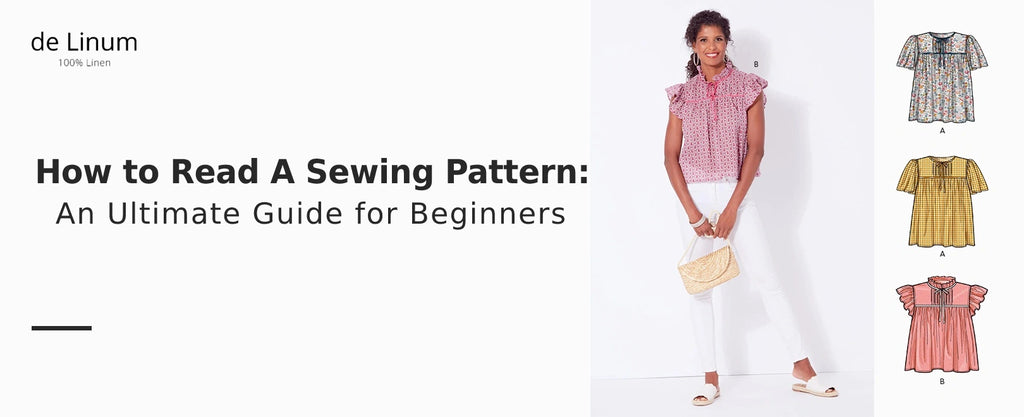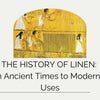How to Read a Sewing Pattern : An Ultimate Guide for Beginners

Have you ever felt intimidated by the idea of sewing clothes or wondered what a sewing pattern is? But fear not because learning how to read a pattern for sewing will be manageable. Instead, a little practice can help unlock the secrets of sewing patterns and confidently create your custom-made garments.
This step-by-step guide will help you decipher pattern symbols, select the suitable fabric and bring your vision to life. So grab your creative cap and dive into the world of sewing patterns.
What Is a Sewing Pattern?

A sewing pattern, in simple terms, is a set of templates or instructions employed for developing a specific garment. These can be paper or digital templates for each pattern piece and written instructions. It acts as a guide for the user across the process of cutting and assembling the fabric pieces.
What are the different sewing pattern formats you can buy?

Sewing patterns have evolved over the years. As a result, different pattern formats support the sewing process, making it more compatible and easy. Let us discuss a few forms and their advantages.
Paper Sewing patterns
These are physical patterns printed on paper. Users can cut it and use it as a template for the fabric. Paper sewing patterns comprise detailed written instructions.
- Allows you to choose from an extensive range of pattern catalogues
- It allows users to opt for a smaller size based on the requirements
- It is susceptible to tearing as the papers are too thin
Digital / PDF patterns
PDF or digital patterns can be purchased or downloaded online. These print-out pattern pieces are later assembled to create a design. Often they also include written instructions in a digital format.
- It is convenient to download if you good internet and save it on your computer for long-term use
- PDF patterns include separate layers enabling users to print only in one size
- It is easily reusable
- The instructions are more detailed and helpful for visual learners
Cut to measure patterns
They are cut according to specific measurements. You can either have them cut for you at a fabric store or cut them yourself from a master pattern that is designed to be adjusted to fit your measurements.
- Convenient to cut it as per the measurement requirement
- Adjust the size according to the need
- Once cut, it cannot be readjusted
Projector Patterns
These are the newest type of pattern wherein the user can open the files in an adobe reader. First, it is important to calibrate it correctly to ensure the fabric is cut properly.
- The work involves projecting the pattern from the ceiling on the fabric
- It is then cut using a rotary cutter
- You can select one size, as it includes multiple layers
- The design can be used again and again
- It saves money spent on paper and ink
Designer and vintage patterns
Vintage patterns are older that may be out of print but can still be found online. They come in a printed paper format and often require a few adjustments to fit the modern sizing and styling needs. On the other hand, designer patterns are used by fashion designers and pattern companies. These are available in printed paper or PDF format. The typical feature includes adding unique design details along with advanced construction techniques.
How to read a sewing pattern
Sewing patterns tend to vary for different fabrics based on the level of learning and pattern. Thus, knowing how to read a sewing pattern layout is necessary to advance further. Here is a step-to-step guide on how to measure a sewing pattern and read it.
The forest step will be understanding the Sewing level.
1. Sewing level

Your sewing patterns will include beginner, intermediate and advanced levels based on your range of knowledge. Based on the level, it is recommended to employ different patterns implemented as per the levels.
-
Beginner
Ideal patterns for beginners will not include details or intricate seams like binding, piping, etc. These mainly include darts but elaborate on how to sew the fabric.
-
Intermediate
It includes intermediate designs even if you are not well aware of fundamental sewing techniques. At this level, the user is confident in their craft and can tackle most garments with a certain finesse.
-
Advanced
The user has advanced experience and can learn new things at this stage. You can go on to experiment with advanced patterns and styles based on the illustrations provided to check the various styles you can try out.

2. Style lines
Sewing patterns with style lines can be complex to read and follow, but will show you the actual placement of the lines for a finished garment. It includes instructions on how to cut through the lines and match them during construction. Moreover, it requires precision to fit and adjust the garment to the required sizes.
These are further divided into:
-
Adjustment line
This showcases parallel lines and solids used to indicate where the fabric can be shortened or lengthened.
-
Fold line
This represents the edge piece of the fabrics aligned using a fold. The lines must not be cut, as that will create an issue when the pieces of fabric are attached to another piece.
-
Seam Line
This helps understand sewing pieces of fabric with each other indicated with arrows to show in which direction it must be cut.
-
Grain Line
Grain Line is a solid line symbolised by an arrow on both ends. It helps the user know which direction you must cut it.
3. Pattern symbols
The pattern symbols help to know how to shorten or lengthen the pattern either for cutting or marking the instructions. It also helps to gauge which view is required for which fabric, ensuring the least wastage.
-
Pleats
Pleats are shown in circles at the corners or end of the lines. On the other hand, tuck is symbolised as a dart and arrow pointing to the point.
-
Gather
Gather is indicated with a wavy line to indicate to the user how to proceed with the cutting and instructions.
-
Seam allowance
Seam allowance is shown as a ruler with minuscule fraction markings at the side.
-
Markings for buttons and buttonholes
Markings for buttons and buttonholes include straight lines combined with perpendicular notches. The symbol X indicates where the button has to be sewn and on the opposite site, the buttonholes are constructed.
- Marking for the zipper
Marking for the zipper is shown as a straight line consisting of an arrow on the sides pointing to the line.
4. Fabric suggestions

It specifies the fibre content, its weight, drape and pattern. The users will be instructed about the weight of the fabric, which refers to how thick or heavy it is. Furthermore, if you need clarification on the drape, the best is to hold the fabric up to see how it falls or drape it over a mannequin. Experiment with different fabric and patterns to achieve a unique look.
5. Size Chart

Check out the size chart in the pattern to choose the one which aligns with your pattern depending on different versions from the US, UK, EU and more. Once you have determined the size, it will be easier to assemble the fabric. Moreover, the chart will include two numbers to make it easier if it is a combination of fabrics.
6. Pattern Pieces
Pattern pieces make it easier to select which pattern piece you would like to choose. The instruction will also include which pieces will be required for different views.
Check out our Sewing Patterns in Australia Collections here.
Check out Dress Sewing Patterns here.
Check out our Easy Sewing Pattern For Beginners here.
Conclusion
The crux of sewing for beginners is being well adept with the patterns. Once you gain expertise on how to follow a sewing pattern, it will be easier to dive into the projects with complete confidence.
Check out the instructions and learn how to read a sewing pattern by visiting de Linum. Browse through multi-size sewing patterns, linen fabrics, size charts and more. Visit us today to begin your sewing career.





